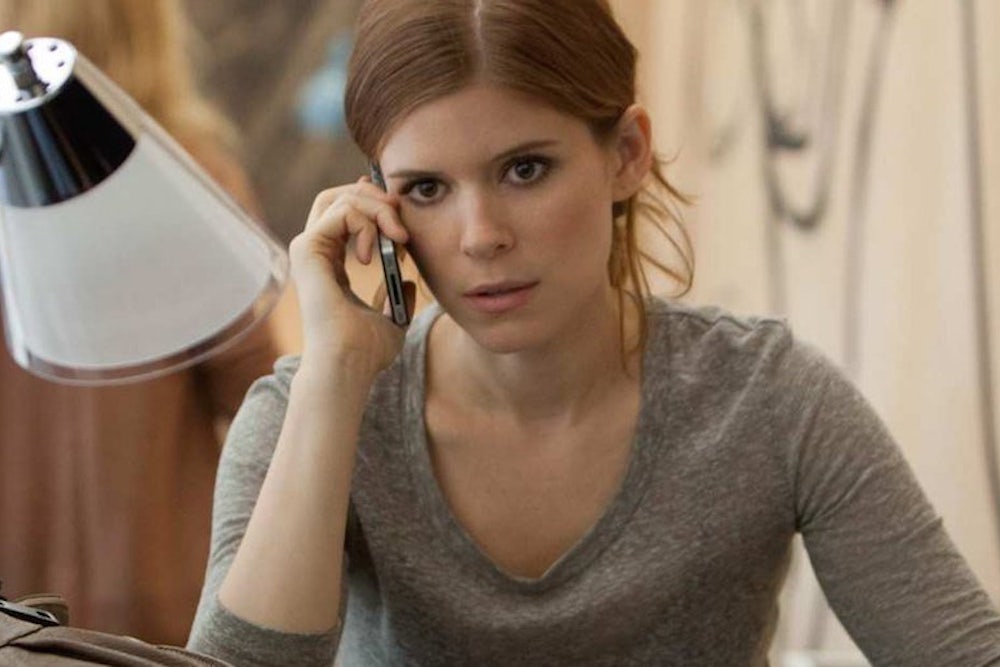A new study by University of Kansas professor Scott Reinardy, who surveyed more than 1,600 journalists, found that female journalists “are experiencing more job burnout and more intend to leave the field or are uncertain about their futures than their male counterparts,” according to the KU News Service. And the problem is worsening, apparently. In Reinardy's 2009 study, “62 percent of women said they either intended to leave journalism or were uncertain about their future. The current study showed that number at 67 percent. The number was 55 percent for men in the new study.”
While some of the male-female disparity is likely due to general workplace conditions affecting all sectors, it seems relevant that journalism has changed so tremendously in recent years. “The field of journalism has changed greatly over the last decade, and those changes are taking a particularly hard toll on women working in newsrooms,” the KU press release says—but doesn’t elaborate on what those changes are. Indeed, that wording—“women working in newsrooms”—evokes a bygone era of news coverage. It brings to mind Mary Richards, a woman in a man’s world, helping gruff Lou Grant get breaking news about local fires and such onto a nightly newscast. Or, in the realm of real people, someone like Christiane Amanpour, whose bio notes her work in “the world's major hotspots, including Afghanistan, Iraq, Iran, Pakistan, Somalia, Israel, the Palestinian territories, Asia, Rwanda, the Balkans, and the U.S. during Hurricane Katrina.” It suggests, in other words, a time before clickbait confessional essays came to make up much of journalism, especially journalism by women.
The press release notes that “women started making gains in newsrooms about the time of the women’s movement and civil rights movements, which led to more ‘lifestyles’ and ‘features’ sections and eventually more equality in all news disciplines.” While “lifestyles” brings to mind fashion and recipe coverage, and “features” something similarly fluffy, woman-oriented journalism also encompasses feminist writing, often in the same newspaper sections or niche publications. And the issues Jamil Smith laid out in his New Republic story on race beats are also applicable to gender beats. Identity-based assignments (often self-assignments) are on the one hand necessary for ensuring coverage of otherwise-ignored issues, but on the other, can end up cordoning off journalists who are Other in some way into not just a limited set of topics but ones extra-likely to take an emotional toll. Smith notes Cord Jefferson’s “exhaustion as a black journalist writing stories of black politics and struggle in America.” In a Medium essay that Smith cites, Jefferson laments the “hostility directed at writers who cover minority beats in America.”
It’s not just that the material itself is upsetting in a personal way. It’s also that if people associate you with a certain activist cause—like gender or race equality—you end up on hate groups’ email and Twitter lists as someone to harass. Just ask Amanda Hess.
That toll only becomes greater once the journalist is expected to incorporate herself into the story. In a Washington Post piece from August I keep linking to for a reason, Alyssa Rosenberg used the term “burnout” to describe the cycle of feminist writers producing confessional content, getting trolled, opting out of this ostensibly empowering (but maybe not really?) line of work, and getting replaced by a new set of confessional-content providers. It’s one thing to be on the reproductive-rights beat and another to realize—through implicit or explicit editorial instructions—that your own uterus has to be alluded to in one way or another. If what you’re covering relates to your identity, why not take that one step further? Why not include a mention of your own private life or that of your kids, as it pertains to the matter at hand?
But that’s where female-oriented journalism has landed. A recent Slate review of Kate Bolick’s book about being an unmarried woman tells us about as much about reviewer Laura Kipnis’s love life as Bolick’s. Meanwhile, the New York Times is running a series from a woman who has chosen to go off her psychiatric medications. This sort of sharing, while of course voluntary, is a different kind of labor than other journalism, one with its own special kind of burnout potential.
Since much of the burnout probably results from online harassment directed at female (and minority, and female-and-minority) journalists regardless of their subject matter, it’s important not to overestimate the role that “beats” or confessional essays play in burnout. But the shift since 2009 makes me think changing journalistic styles play a role. While there is indeed value in having women-oriented issues covered, and in having women often cover them, if female journalists didn’t—or didn’t think they needed to—include autobiographical asides in their stories, this might help. Although it’s unclear how much it’s up to the individual journalist to solve that problem.
